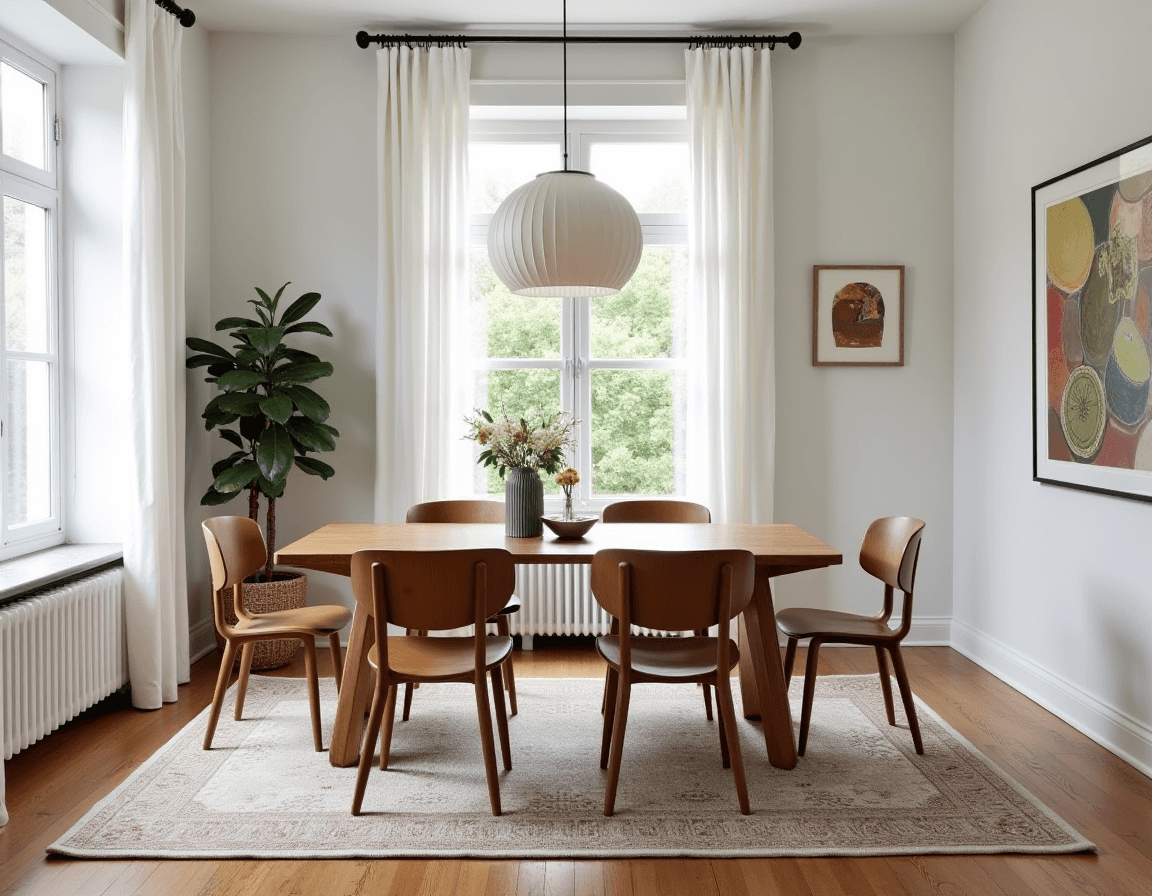Apr 15, 2025
•
Onton Team
Thinking about putting a rug under the dining table? Learn the pros, cons, and best materials and sizes to elevate your space.
It’s not just a table decked out with your favorite dishes that draws a crowd to the dining room. A dining room rug frames the space, naturally pulling your guests toward an inviting meal.
But choosing the right rug under a dining table takes more than picking a color you like. Dining room rugs get a lot of action — dirty shoes, spills, crumbs, and heavy chairs sliding back and forth. The right rug handles it all while also complementing the space.
In this guide, we’ll look at how the right rug really ties the room together, including sizes, materials, and styles that are practical and effortlessly stylish.
Should you put a rug under the dining table? Pros and cons
A dining room rug can define the space and protect your floors, but it also presents some upkeep challenges. Understanding how a rug holds up to daily wear can help you decide if it’s the right choice for your dining area.
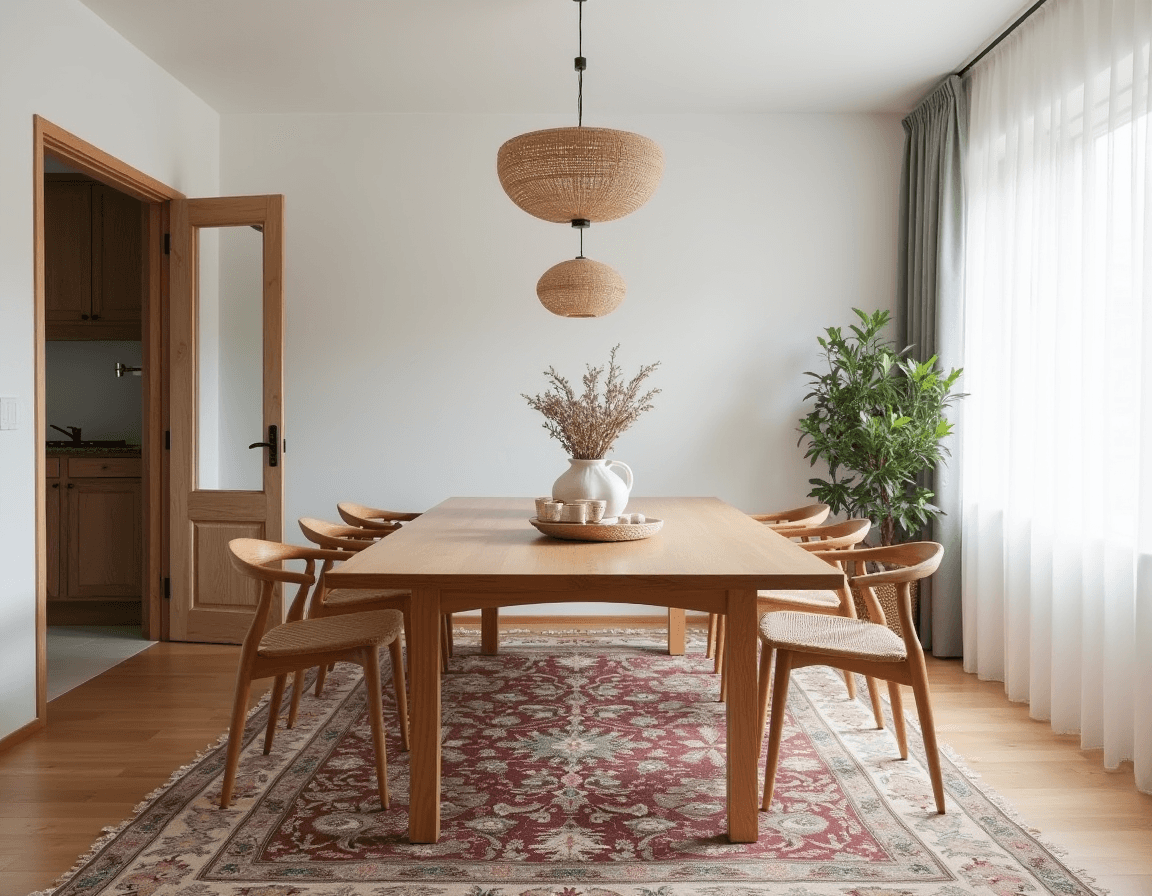
Pros of using a rug in the dining room
Enhances dining area aesthetics
An area rug is like a good pair of shoes or a bold necklace — it completes the look. In quieter, minimalist spaces, a rug brings contrast, breaking up the monochrome palette. In more maximalist settings, it can anchor the rest of the furniture and prevent visual overwhelm. A well-chosen rug adds color, texture, and personality, making your dining room design feel intentional and grounded.
Provides comfort and warmth
The right rug can give the dining room a warm, hygge vibe. And it's not just aesthetics. Tile, laminate, and wood flooring can feel cold underfoot, especially in cooler months. A rug adds warmth while also absorbing sound for a softer, more intimate vibe.
Protects flooring from scratches, spills, and wear
Dining chairs scuff floors over time, and occasional spills are inevitable. A rug is a barrier, preventing damage and extending the life of your flooring.
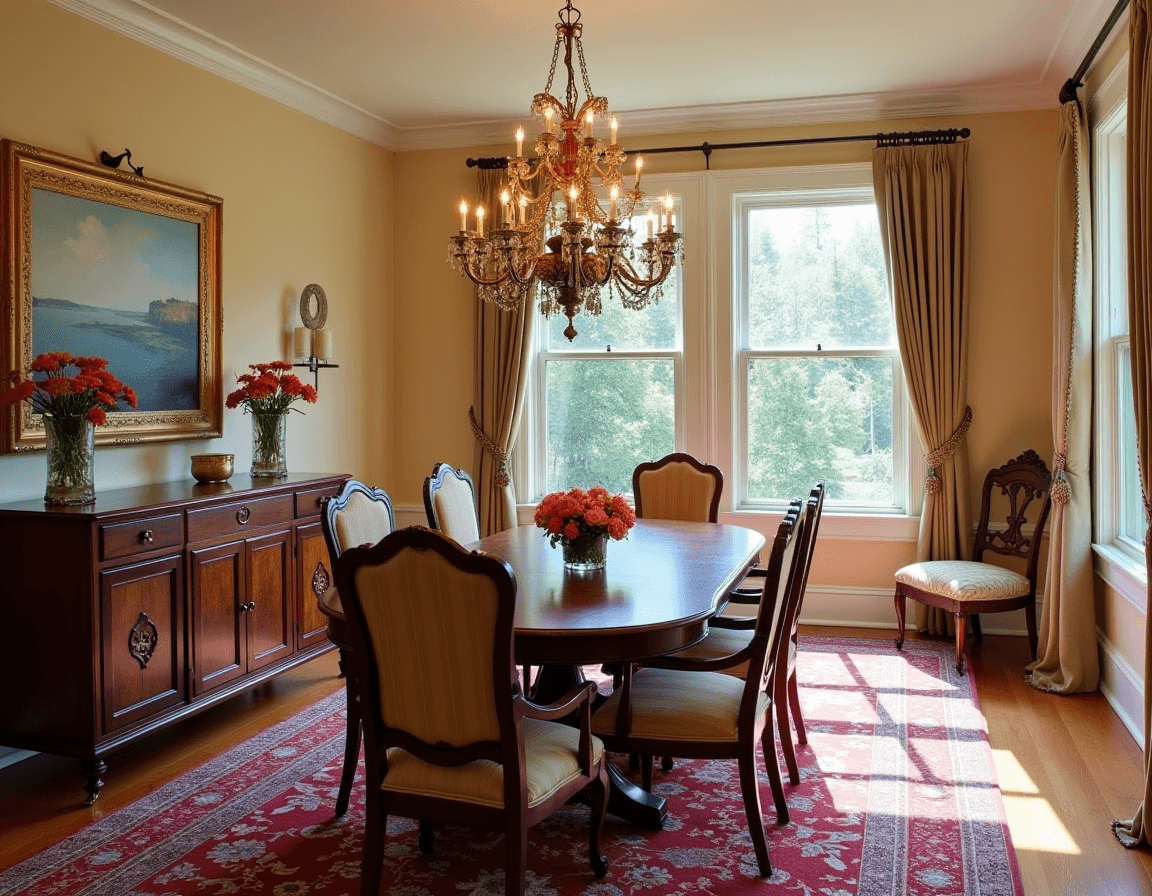
Cons of using a rug under a dining table
Cleaning challenges due to food and drink spills
Crumbs, spills, and stains are hard to avoid in a dining room, and some rugs make cleanup harder than it needs to be. High-pile rugs trap crumbs, while natural fibers quickly absorb liquids. Regular vacuuming and a spot-cleaning kit on hand are maintenance musts.
Can be difficult to move chairs smoothly
Thicker rugs or shaggy ones with high-piles make it difficult to slide dining chairs in and out, which can be frustrating for kids or guests with mobility issues. The extra resistance can also quickly wear down the rug, creating unsightly wear patterns and fiber matting.
May not be ideal for small dining areas
Small spaces require careful furniture placement to create visual openness. Often, a rug does the opposite. An area rug in a compact dining room can make everything feel cluttered and cramped.
Shop for a dining room-friendly rug on Onton
What size rug under the dining table? Standard rectangular rug sizes
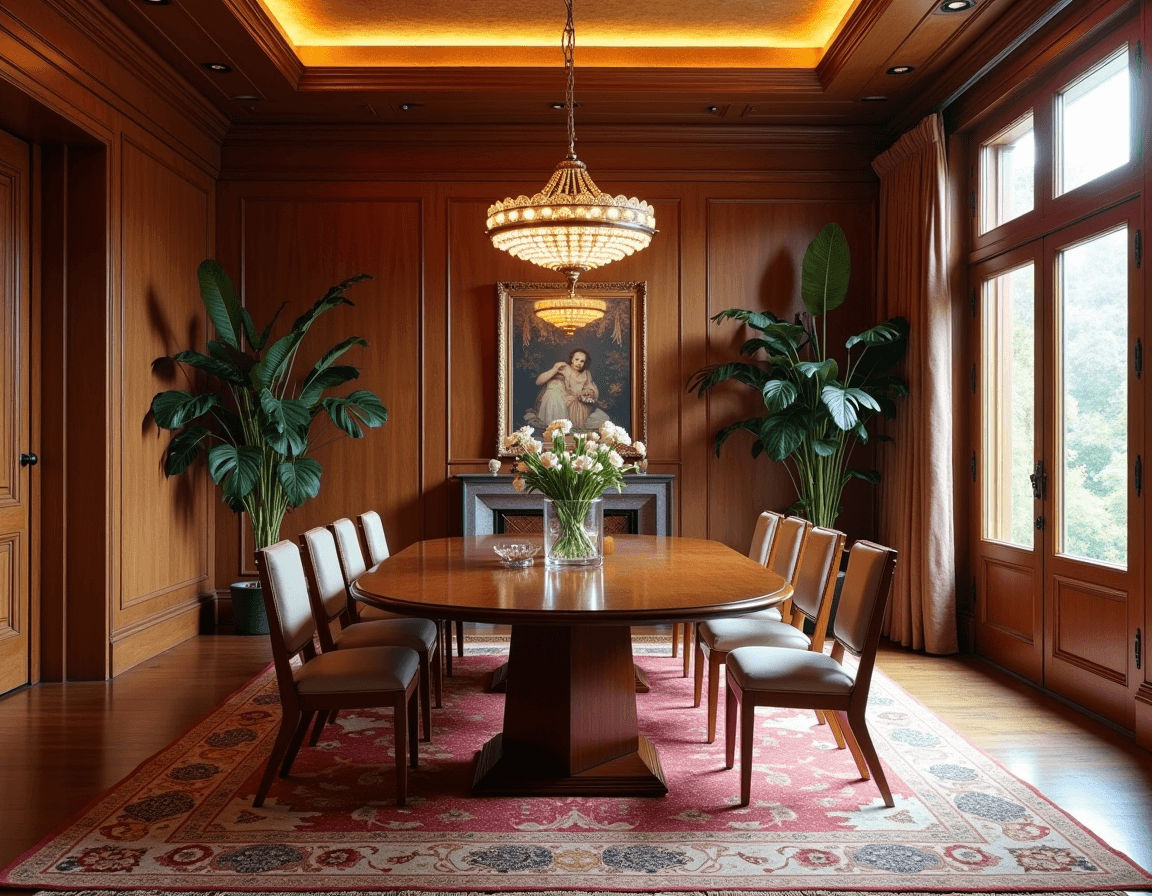
An area rug that’s too small cramps your style, whereas one that’s too large overwhelms the eye. Here’s a breakdown of common rug sizes and how they work for different furniture and room layouts.
4x6 rug for dining table
Perfect for small spaces, this size fits well under a bistro table or in a cozy dining nook. This size can help define the area, creating a divider for smaller dining room tables while making the space feel more open and airy.
5x7 rug for dining table
For a moderately-sized dining area with a table for four, go with a 5x7 rug under the dining table. It’ll give chairs just enough coverage without overwhelming the room.
6x9 rug for dining table
A 6x9 rug is another great size for a dining table of four in a room with a bit more space. This size provides plenty of room for dining chairs to move around comfortably while keeping the room open.

8x10 rug for dining table
A great fit for dining room tables that seat six, this size allows chairs to stay on the rug. The right color and fabric, like earthy-colored wool, can make a space feel cozy and inviting, while a deep red bohemian patterned rug design can make the ambiance more energetic.
9x12 rug for dining table
For large dining rooms and tables that seat eight or more, a 9x12 rug offers generous coverage. Similar to an 8x10 area rug, this rug takes up a lot of visual space — the design adds grandeur and centers the rest of the decor.
Search for dining room decor on Onton
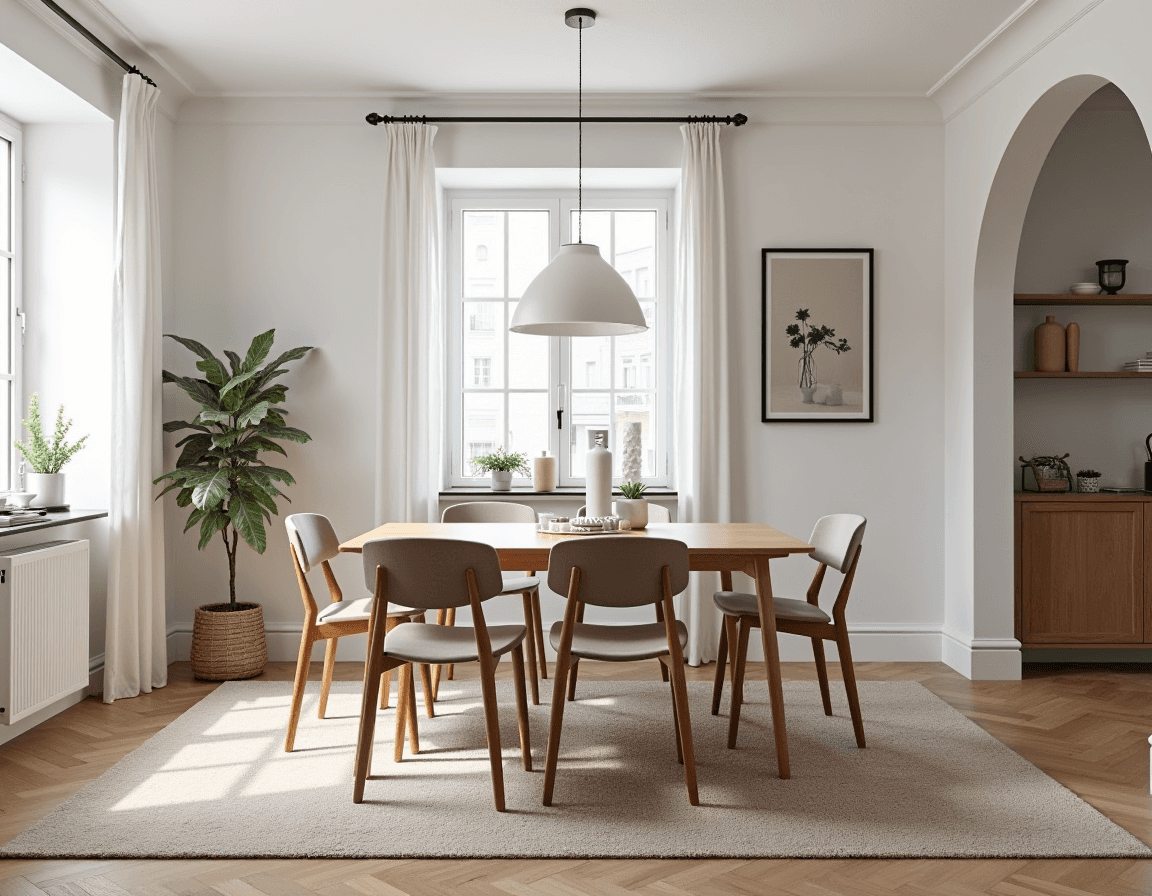
What size rug to choose for your dining table? 4 considerations
The size and shape of your dining room table is a great place to start. Here are some other factors to consider when choosing a dining room rug.
Chair clearance
As a rule of thumb, a rug should provide at least 24 inches of clearance around the table. This lets you slide dining room chairs in and out comfortably and prevents legs from getting caught on the rug’s edge.
Room size
Rug edges that sit too close to the wall confuse the eye. Anything less than 12 inches makes a space feel cramped and cluttered. Aim for 12 to 24 inches to create a sense of balance and movement.
Rug and table shape
The shape of the rug should mimic the shape of your table to keep the energy grounded and harmonious. Unless “round rug square table maximalist chaos” is the mood you’re looking for, stick to round rugs under round dining tables and rectangular rugs for rectangular dining tables.
Open-plan vs. closed dining rooms
Open-plan rooms benefit from subtle separation between functional areas. A thoughtful dining room rug placement can anchor the dining table. Choose a size depending on the go-to rules about room size and chair clearance. For closed dining rooms, a large rug reduces noise, which is especially important in a room with little furniture.
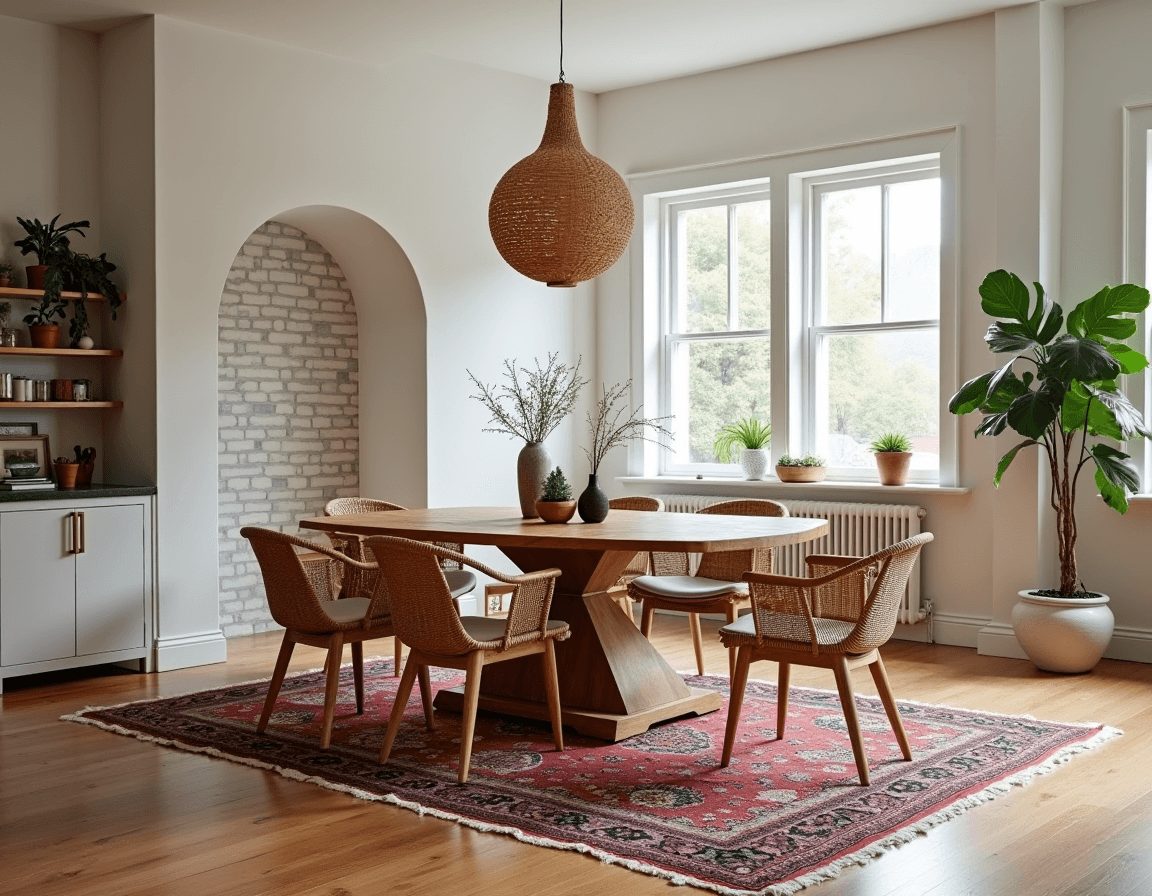
Choosing the right material and texture for a dining room rug
Now that we’ve dotted all the i’s and crossed all the t’s on sizing, let’s consider a few design features.
Pick rugged materials
Dining rooms get a lot of traction from moving feet and chair legs. Opt for stronger materials that are easy to clean, including flat weave rugs, jute, nylon, and wool. They’re versatile and durable, avoiding noticeable wear and tear.
Avoid plush and high-pile rugs
Leave the high-pile shag rug in the living room. While plush and high-pile rugs add coziness, they’re impractical for dining rooms — trapping crumbs and adding more surface space for stains. A low-pile rug like a flat weave keeps your dining room looking neat.
Find easy-to-clean options
Not to sound like a broken record, but did we mention dining rooms are stain-prone? Busy dining spaces require stain-resistant furniture that can stand the test of time. Look for dining room rugs with stain-resistant treatments, synthetic blends, or washable rugs that can stand up to spills.
How Onton’s AI helps you find the perfect dining table rug
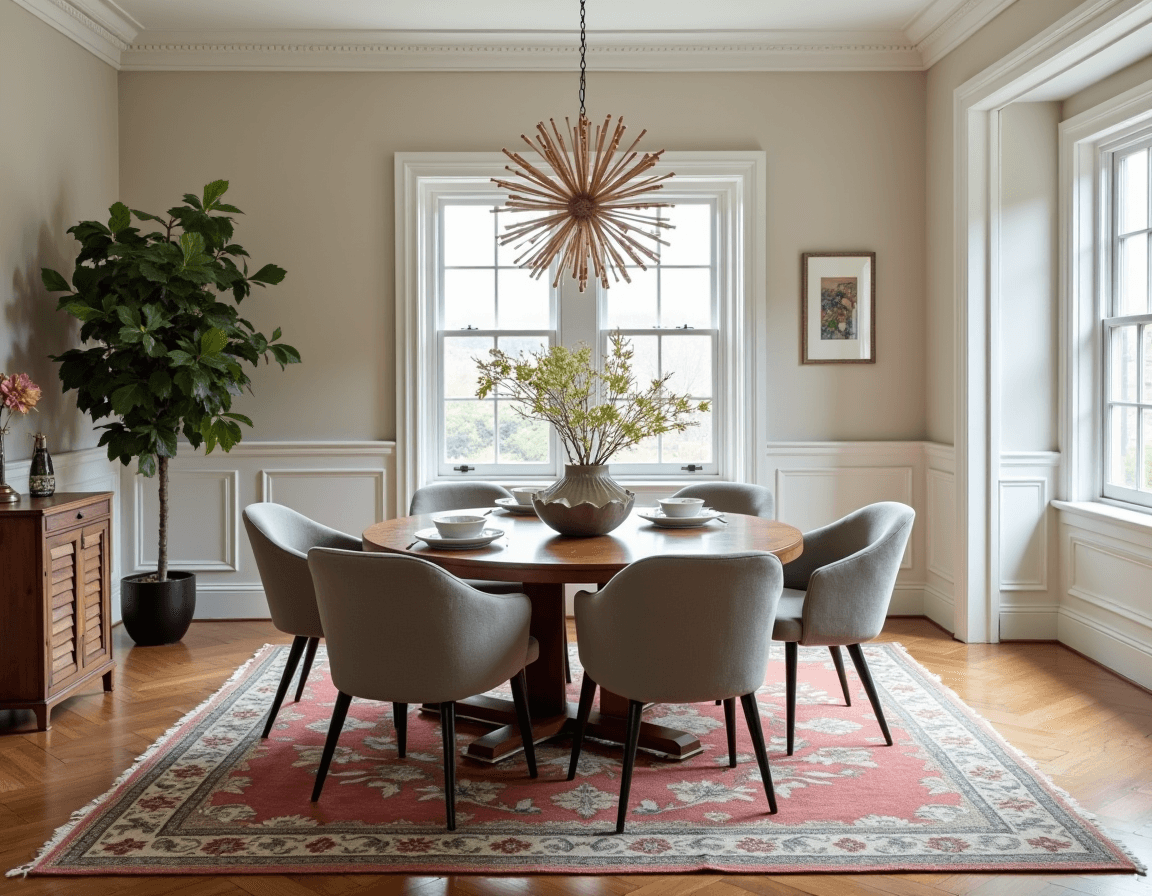
Looking for the perfect rug to tie your dining space together? Onton’s user-friendly AI-driven search engine lets you reimagine your dining room in seconds. Simply describe what you’re looking for, like “mid-century geometric rug in warm earth tones,” and explore tailored options immediately.
Then, use Onton’s Imagine tool to see exactly how your new area rug will fit into your unique space. You can even upload an image of your dining room and write prompts to customize the final decor perfectly.
Dream up your ideal dining room with Onton.
FAQ
What’s the rule of thumb for a dining room rug?
Whether it’s a rectangular or round rug (for a rectangular or round dining table, respectively), make sure there’s 24 inches of clearance between the table’s edge and the rug’s edge.
Should dining chairs sit on a rug?
Yes. The 24-inch clearance rule ensures dining chairs stay on the rug. This minimizes scratch marks on your gorgeous floors (especially tile and hardwood floors) and keeps chair legs from getting caught on the rug.
Is a round or rectangular rug better for a dining table?
Round table, round rug; rectangular table, rectangular rug.

